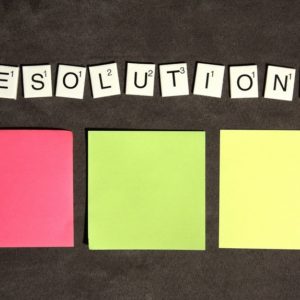In today’s dynamic job market, taking control of your career path is more crucial than ever. Whether you’re just starting out, looking to climb the corporate ladder, or considering a complete career change, a well-crafted career development plan can be your roadmap to success. But how do you create a plan that truly works? In this comprehensive guide, we’ll walk you through the five essential steps to create a career development plan that will propel you towards your professional goals.
Why Your Career Needs a Development Plan
Picture your career as a journey. Without a map or destination in mind, you might find yourself wandering aimlessly, missing out on exciting opportunities, or worse, feeling stuck in a job that doesn’t fulfill you. A career development plan is your personal GPS, helping you navigate the complex landscape of your professional life.
But it’s not just about avoiding pitfalls. A solid career development plan can:
- Clarify your professional goals and aspirations
- Identify skills gaps and areas for improvement
- Provide a structured approach to achieving your objectives
- Increase your marketability and earning potential
- Boost your job satisfaction and overall career fulfillment
Now that we understand the importance of a career development plan, let’s dive into the five essential steps to create one that works for you.
Step 1: Self-Assessment – Know Yourself, Know Your Path
The foundation of any successful career plan is a thorough understanding of yourself. This step involves introspection and honest evaluation of your:
- Skills and Strengths: What are you good at? What unique talents do you bring to the table?
- Interests and Passions: What kind of work excites you? What industries or roles do you find fascinating?
- Values and Motivations: What drives you? What aspects of work are most important to you?
- Personality Traits: How do you prefer to work? Are you more suited to collaborative or independent roles?
To conduct an effective self-assessment:
- Take career assessment tests (e.g., Myers-Briggs, StrengthsFinder)
- Reflect on past experiences and achievements
- Seek feedback from colleagues, mentors, and friends
- Keep a journal of your work experiences and reflections
Step 2: Set SMART Career Goals – Your Destination Matters
With a clear understanding of yourself, it’s time to set concrete career goals. The SMART framework is an excellent tool for this:
- Specific: Clearly define what you want to achieve
- Measurable: Establish concrete criteria for measuring progress
- Achievable: Set goals that are challenging but attainable
- Relevant: Ensure your goals align with your long-term career aspirations
- Time-bound: Set a realistic timeframe for achieving each goal
Examples of SMART career goals:
- “Obtain a project management certification within the next 12 months”
- “Secure a leadership position in my department within 2 years”
- “Increase my salary by 15% through a promotion or job change within 18 months”
Remember to set both short-term (1-2 years) and long-term (3-5 years) goals. This approach allows you to make steady progress while keeping sight of your bigger career aspirations.
Step 3: Identify Skill Gaps and Development Opportunities
Now that you know where you want to go, it’s time to identify what you need to get there. This step involves:
- Research: Investigate the skills, qualifications, and experience required for your target role or industry.
- Gap Analysis: Compare your current skillset with the requirements you’ve identified.
- Learning Opportunities: Explore ways to acquire the necessary skills and knowledge.
Consider various development opportunities such as:
- Formal education (degrees, certifications)
- On-the-job training and stretch assignments
- Workshops and seminars
- Online courses and webinars
- Mentorship programs
- Volunteering or side projects
Pro tip: Don’t overlook the importance of soft skills like communication, leadership, and adaptability. These are often as crucial as technical skills in career advancement.
As you identify areas for improvement, remember that your resume plays a crucial role in showcasing your skills and experiences. If you’re looking to highlight your newly acquired skills or present your existing ones more effectively, consider professional resume writing services. Check out this list of the best resume writing services to find expert help in crafting a resume that aligns with your career development goals.
Step 4: Create Your Action Plan – Turning Goals into Reality
This is where your career development plan takes shape. Your action plan should outline specific steps to achieve your goals and address your skill gaps. For each goal, break down the actions required:
- What: Specific actions or tasks
- How: Methods or resources needed
- When: Deadlines or timeframes
- Measure: How you’ll track progress
Example action item: Goal: Obtain a project management certification
- What: Complete PMP certification
- How: Enroll in online prep course, study 2 hours daily, join study group
- When: Pass exam within 6 months
- Measure: Track study hours, take practice tests, set exam date
Remember to prioritize your action items and be realistic about what you can achieve alongside your current work and personal commitments.
Step 5: Review and Adjust – Embrace the Journey
Your career development plan isn’t set in stone. The final step is to regularly review and adjust your plan as needed. Set up a system for tracking your progress and reflecting on your journey:
- Schedule quarterly reviews of your goals and action plan
- Celebrate milestones and achievements along the way
- Be prepared to adjust your plan as circumstances change or new opportunities arise
- Seek ongoing feedback from mentors, colleagues, or a career coach
Remember, career development is a continuous process. As you grow and evolve, so too should your career plan.
[Image suggestion: A circular diagram showing the cyclical nature of career development, with arrows connecting “Plan,” “Act,” “Review,” and “Adjust”]
Your Next Steps: Putting Your Career Development Plan into Action
Now that you have the blueprint for creating a successful career development plan, it’s time to take action. Here’s what you can do right now:
- Set aside dedicated time for self-assessment and reflection
- Draft your SMART career goals
- Research the skills and qualifications needed for your target role
- Start exploring learning opportunities to address your skill gaps
- Create a detailed action plan with specific tasks and deadlines
Remember, the most effective career development plan is one that you actively engage with and refine over time. By following these five essential steps, you’re not just planning for success – you’re taking control of your professional future.
Are you ready to embark on your career development journey? With a solid plan in hand, there’s no limit to what you can achieve. Your dream career is waiting – it’s time to make it a reality!





